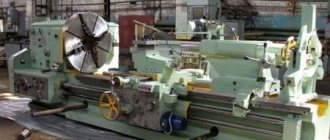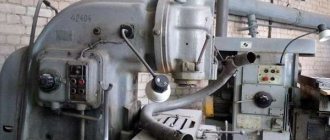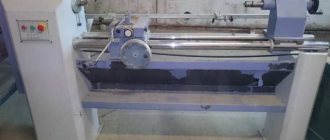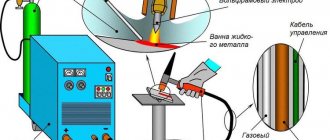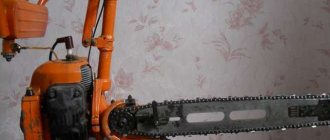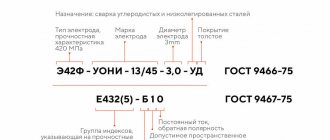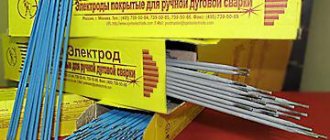general information
Welding elements of the MP-3 brand are suitable for joining workpieces made of carbon and low-carbon steels. They can be welded in close contact or leave a small gap. In the latter case, experts recommend choosing the welding mode very carefully and using less than the rated current to avoid the formation of defects or cracks in the metal.
Additive materials produced under this brand are advantageous in that during their use a minimal amount of substances is released, so there is no doubt about their safety. They are indispensable for welding carried out in particularly difficult conditions, since they are the least demanding on the cleanliness of the surface, which may have rust stains or moisture, but this does not greatly affect the quality of welding.
Welding work is carried out using conventional transformers that maintain a minimum voltage of 50 V. MP-3 welding material can also be used for mounting parts of medium or large thickness. The metal can be easily welded throughout the entire recess, ensuring high strength of the joint created. Based on the technological conditions of welding work, when working with these electrodes, it is not necessary to create a large arc to obtain a temperature sufficient to set the metal with the electrode .
As part of the preparatory stage, the electrodes must be dried and calcined, which only has a positive effect on their working properties. Electrodes of this brand can be used in combination with transformers that support operation with direct and alternating current. Filler material can be worked in any position due to the fact that, regardless of the operating conditions, they can provide a high quality connection.
At the end of welding, it is necessary to perform the final operation - remove slag from the metal. This is done very easily, so the quality of the connection remains consistently high. The coating of the electrode directly affects its inherent advantages. The welding material has a special chemical composition, thanks to which it is possible to maintain a stable arc when working in any plane. Due to the stability of the arc, the quality of welding is consistently high, regardless of the influence of extraneous factors.
Storage
Proper storage of electrodes directly affects the quality of the seams and the shelf life of the rods themselves.
The most important rule is to store electrodes in a dry, warm room. No need to leave a pack of rods in the garage all winter! Many people do this, and then wonder why the seams turn out defective. The room in which you store the electrodes should not be too humid. It’s better to take the rods to your apartment, if possible. If you have a large number of electrodes, then it is better to install a thermometer and a device that determines air humidity in the room.
Rutile coated electrodes
Rutile coating is titanium dioxide in powder form, used to increase the strength characteristics of the weld and stabilize the combustion process. Although electrodes with a rutile coating are noticeably more expensive, they have a number of advantages that provide them with undeniable advantages over other types of electrodes. Rutile is most effective at connecting elements containing moisture and rust, helping to reduce metal splashes, thereby reducing its consumption. A distinctive feature of the electrodes is the ease of slag separation.
MR-3
A fairly well-known and popular type of rutile electrodes are MP-3 elements. They are used primarily for connecting critical structures made of carbon steels with a carbon content of at least 0.25% and low-alloy steels. When working with MP-3 electrodes, a continuous arc is formed, which guarantees a neat, durable and even seam. These electrodes can operate at any current.
During welding, MP-3 electrodes can be held in any position except vertical. This is due to the fact that a high-quality connection can only be created with incorrect polarity. MP-3 allows you to perform welding work even on an oxidizing surface and using an extended arc.
The high demand for welding materials of this brand is due to the presence of a lot of positive properties, among which we should highlight the ability to provide a high-quality connection even in the presence of traces of rust, moisture and dirt on the surface, as well as high productivity of welding work.
Content
- Main features of MP-3 electrodes
- Technical characteristics of electrodes
- Advantages of electrodes
- Features of welding with electrodes
- Application of electrodes for welding
- Catalog of electrodes for welding
MP-3 welding electrodes for manual arc welding are among the most popular on the modern market. The list of critical structures that they weld includes pipelines and pipe fittings, boilers and tanks, and almost the entire range of lifting and transport equipment. They are also widely used in everyday life, without causing any special difficulties in work for non-professional welders.
MP-3 electrodes: technical characteristics
MP-3 welding elements are manufactured taking into account the requirements defined by GOSTs 9466 and 9467. The latter states that they are of type E46 and are used primarily for joining low-alloy steels with a mechanical tensile strength of up to 50 kgf∙m/cm2 and carbon steels. The metal to be welded must have a thickness of at least 3 mm and no more than 20 mm.
For the production of filler material, a special wire of type SV-08 with a cross-section of 3 to 6 mm is used. Based on the thickness of the base, electrodes can be divided into several groups depending on their diameter. Electrodes of the MP-3 brand differ from other types of elements by the presence of a rutile coating, the chemical composition of which is associated with the performance characteristics of the welding material.
The length of the elements can range from 300 to 450 mm. Additionally, they may vary in weight:
- 3 mm - 32 g;
- 4 mm - 62 g;
- 5 mm - 93 g.
One package may contain different amounts of welding material depending on their diameter:
• 3 mm – 84 pcs.;
• 4 mm – 42 pcs.;
• 5 mm – 44 pcs.
Manufacturers of MP-3 welding elements point out the importance of observing their storage conditions. The selected place should be heated and dry, the air temperature should not fall below + 15 degrees. Electrodes must be protected from excessive moisture, contamination and mechanical stress. If there are signs of moisture, the welding elements must be calcined for 1 hour at a temperature of + 180 degrees Celsius before use.
MR-3S blue, welding electrodes MR-3S - E46
Home > Welding electrodes> Electrodes for welding carbon and low-alloy structural steels.> MP-3S blue, welding electrodes MP-3S - E46MR-3S. MR-3S electrodes are blue.
GOST 9466-75, GOST 9467-75 (type E46)
The main purpose of MP-3S electrodes:
MP-3S electrodes with a rutile-base coating are intended for welding critical structures made of carbon and low-alloy steels with a tensile strength of up to 490 MPa. Welding is carried out in all spatial positions using alternating and direct current of reverse polarity. Rod made of wire grades Sv-08, Sv-08A in accordance with GOST 2246-70. The diameter of the produced electrodes is 2.0; 2.5; 3.0; 4.0; 5.0 and 6.0 mm.
Characteristics of MP-3S electrodes:
The coating is rutile. Surfacing coefficient - 8.5 g/Ah Surfacing productivity (for diameter 4.0) - 1.2 kg/h. Electrode consumption per 1 kg of deposited metal is 1.7 kg.
Typical mechanical properties of weld metal:
Temporary
resistance, MPa
| Limit fluidity, MPa | Relative elongation, % | Percussion viscosity, J/cm2 | |
| 510 | 420 | 25 | 137 |
Typical chemical composition of deposited metal, %:
| C | Mn | Si | S | P |
| 0.09 | 0.60 | 0.15 | no more than 0.030 | no more than 0.35 |
Dimensions of MP-3S electrodes and current strength during welding:
| Diameter, mm | Length, mm | Current, A | Average number of electrodes per 1 kg, pcs. |
| 3,0 | 350 | 80-140 | 39 |
| 4,0 | 450 | 140-220 | 16 |
| 5,0 | 450 | 160-260 | 11 |
Special properties of welding electrodes MR-3S:
MP-3S electrodes allow welding of rusty metal that is poorly cleaned of oxides and other contaminants, and provide easy closing of gaps. They also provide ease of welding, including when making seams in the ceiling position and when placing tacks, as well as when welding fixed pipeline joints. They allow welding to be carried out at extremely low currents, and for small-diameter electrodes - from power sources connected to a household electrical network. They have increased efficiency when welding T-joints with guaranteed production of concave seams.
Technological features of welding with MP-3S electrodes:
Allows long arc welding.
Calcination before welding is required: 150-180 C; 0.5 hours
Always in stock: MR-3S-2, MR-3S-2.5, MR-3S-3, MR-3S-4, MR-3S-5, MR-3S-6.
Selecting the welding mode for electrodes.
All welding mode parameters can be divided into basic and additional. The main parameters are the magnitude and polarity of the current, the diameter of the electrode, the arc voltage, and the welding speed. Additional parameters are the composition and thickness of the electrode coating, the position of the electrode and the position of the product.
So, what do the main parameters affect?
Welding current. An increase in it causes (at the same welding speed) an increase in the depth of penetration (penetration), which is explained by a change in heat input (heat per unit length of the weld) and partly by a change in the pressure exerted by the arc column on the surface of the weld pool
Welding modes using welding electrodes MR-3S for butt joints without beveled edges
Character of the seam Electrode diameter, mm Current in amperes Metal thickness in mm Gap in mm Single-sided 180 1.9 Double-sided 220 1.5 Double-sided 5 260 7-8 1.5-2.0 Double-sided 330 2.0
Note. The maximum current values must be specified in the electrode data sheet.
Welding modes of butt joints with beveled edges
Electrode diameter, mm Average current value, A Metal thickness, mm Gap, mm Number of layers, except for welding and decorative first subsequent 4 5 180-260 10 1.5 2 4 5 180-260 12 2.0 3 4 5 180-260 14 2.5 4 4 5 180-260 16 3.0 5 5 6 220-320 18 3.5 6
Addition: The current values are specified according to the electrode data sheet.
.The type and polarity of the current also affect the shape and size of the seam. When welding with direct current of reverse polarity, the penetration depth is 40-50% greater than with direct current of direct polarity, which is explained by the different amount of heat released at the anode and cathode. When welding with alternating current, the penetration depth is 15-20% less than when welding with direct current of reverse polarity.
The diameter of the electrode is selected depending on the thickness of the metal being welded, the position in which the welding is performed, as well as the type of connection and the shape of the prepared edges for welding. When butt welding sheets of steel up to 4 mm thick in the lower position, the diameter of the electrode is usually taken equal to the thickness of the metal being welded. When welding steel of greater thickness, electrodes with a diameter of 4-6 mm are used, provided that complete penetration of the parts being connected is ensured and the seam is correctly formed.
The tension mainly determines the width of the seam. Tension has a very small effect on penetration depth. If the welding speed is increased as the voltage increases, the weld width will decrease.
The current strength mainly depends on the diameter of the electrode, as well as on the length of its working part, the composition of the coating, and the welding position. The higher the current, the higher the productivity, i.e., more metal is deposited.
Rice. Welding butt seams.
I - welding the seam “in weight”; 2 - welding on a copper lining (removable); 3-welding on steel remaining backing; 4- welding with preliminary and underwelding seam
However, if the current is excessive for a given diameter of the electrode, the electrode quickly heats up above the permissible limit, which leads to a decrease in the quality of the seam and increased spattering.
In Fig. Schemes for welding butt seams on a canopy, on a copper removable lining, with a preliminary weld and on a steel lining are presented.
We have the widest selection of welding electrodes!!!
ANZHR-1, OZANA-1, OZA-1, ANZHR-2, OZANA-2, OZA-2, MR-3
Application
Welding elements of the MP-3 brand are intended for welding work at constant or variable current, guaranteeing a voltage in no-load mode of at least 50 V. In the case of supply from a direct current power source, the polarity must be reversed. During the welding process, the filler material can be held in any plane.
Technological features
- High connection quality and performance;
- Hassle-free re-ignition;
- It is easy to separate the slag crust from the weld seam;
- Minor amount of metal spatter;
- Simplicity of the process of creating a weld;
- There are no difficulties in igniting the electric arc and maintaining its stable combustion.
Under normal temperature conditions, the weld metal, as well as the deposited metal, acquire the following strength characteristics:
- The mechanical tensile strength indicator is no more than 46 kgf/mm2;
- Relative elongation - 18%;
- Impact strength - 8 kgf∙m/cm2.
To correctly calculate the operating current, it is necessary to take into account the features of using electrodes and their diameter:
- with a diameter of 6 mm only in the lower location - 300-360 A;
- 5 mm for vertical 160−200 A, for lower -180−260 A;
- 4 mm for vertical 140-180 A, for bottom 160-220 A, for ceiling 140-180 A;
- 3 mm for vertical 90-110 A, for bottom 100-140 A, for ceiling 100-120 A.
Depending on the weight, about 1.7 kg of MP-3 is consumed per 1 kg of metal for welding.
How did the welding electrode appear?
The history of the emergence and use of welding electrodes is closely intertwined with the development of welding technologies.
The very first time they were used in various experiments and experiments that were related to determining the properties of electric arcs. These scientific tests were carried out by Professor V.V. Petrov. A large number of scientific researchers and real scientists worked on the development of a real welding electrode, as well as improving the presented design. As a result, it was decided to use elements such as sodium, calcium and potassium. These substances have the lowest possible potential and are capable of ensuring easy ignition of the arc , as well as maintaining its combustion cycle.
In the first quarter of the twentieth century, scientists were able to develop many designs for manual welding, methods for their production and the optimal composition for coating.
Peculiarities
The filler material of this brand can be used to connect structures both long and using short tacks. With their help, it is possible to perform metal connections without preliminary preparation, which may have:
- wet surface;
- traces of oxides and contaminants;
- signs of rust.
Welding elements MP-3 are also suitable for connecting elements along gaps, but when using a minimum current. Otherwise, pores may appear in the seam. The presence of the letter “m” (MR-3m) in the marking of welding elements indicates the presence of a rutile-ilmenite coating, and the letter “c” (MR-3s) indicates the use by the manufacturer of a rutile coating containing special ionizing additives.
If we compare these two types of electrodes in terms of characteristics, then these are the same MP-3 electrodes.
The MP-3 welding material simplifies the arc ignition process due to the presence of special additives in the coating when using low-power welding machines with a voltage of about 50 V. In addition, they are more preferable than conventional MP-3 electrodes due to higher sanitary and hygienic indicators . Welding carried out using such elements is accompanied by the release of no more than 0.6 g of manganese. When using conventional MP-3 electrodes, 1.25 g of the substance is released.
In addition, MP-3 elements allow for more uniform seams, which has a positive effect on the mechanical characteristics of the joint.
Difference from MP-3
The composition and characteristics of 3C and 3 are very identical. There is one exception. Thanks to a number of additives, the arc of the 3C brand is ignited more easily; when using a low-power household welding investor, it burns constantly.
The amount of manganese released during operation is much less than with MP-3. Also, the seams come out much more uniform and easier to form.
Conclusion: MP-3 brand electrodes are more practical. Suitable for professional and amateur activities. MP-3C are intended for home work by amateur craftsmen.


